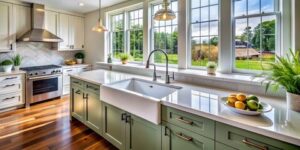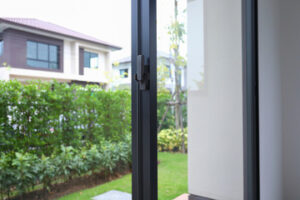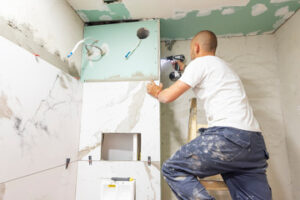Cabinet refacing involves giving your cabinets a facelift by replacing doors and drawer fronts, but leaving the existing framework in place. It typically takes 3-5 days and is less expensive than full replacement.

If you have specific design needs that can’t be met by refinishing or refacing, full kitchen replacement may be the best option for you. Contact Sacramento Cabinet Refacing Anchor for professional help.
Cabinet refacing is more cost-effective than replacing cabinets because it keeps the existing structure intact, which reduces labor costs. In addition, refacing eliminates the need for new plumbing, electrical, and gas connections, saving on those expenses as well. Moreover, refacing can be completed in a much shorter time period than a complete kitchen renovation, minimizing the disruption to your daily life and home.
Furthermore, refacing saves on natural resources because the original cabinet boxes are not discarded and instead are reused to revitalize their surfaces with veneers and hardware updates. This minimizes the demand for raw materials and helps preserve our forests.
When you consider the cost-effective nature of this remodeling method, it’s no surprise that many homeowners find it an attractive alternative to a full replacement. For example, a replacement project requires demolishing and disposing of the old kitchen, which can generate large amounts of waste, as well as take up space in landfills. Moreover, it can be very costly to dispose of the materials used in a renovation.
By contrast, a refacing project only requires the installation of new doors, drawer fronts, and hardware. The underlying cabinet structure remains intact, avoiding the need for disposal and cutting down on overall waste. In addition, refacing can be done with sustainable woods and materials that are environmentally friendly.
Cabinet refacing is also much faster than replacement because the construction process can be completed in just a few days, rather than weeks or months for a full kitchen renovation. It is important to note, however, that refacing limits design options since you are sticking with the existing layout and storage configuration of your kitchen.
A professional cabinet refacing company will provide you with a range of different door styles, materials, and finishes to curate your desired look and complement the rest of your home. This customization allows you to create a unique style that is completely suited to your personality and taste. This is one of the most significant ways that cabinet refacing differs from replacement, as you have a lot more control over your final product and can ensure that it reflects your personal aesthetic.
Versatile
Cabinet refacing offers plenty of customization options to match your design preferences and style. You can choose from a wide selection of colors and finishes, including natural wood tones or more modern materials like melamine. You can also add a variety of knobs and handles to complete the look. This versatility gives you the option to transform your kitchen to suit your aesthetic and create a space that truly feels like home.
While refacing is an ideal option if you’re happy with your kitchen layout and don’t need to make significant structural changes, it doesn’t address underlying issues such as water damage or rot. It is also a temporary solution, meaning that it won’t last as long as a full replacement.
Choosing a reputable company that specializes in cabinet refacing can help you ensure that your project is completed with high quality materials and expert workmanship. Ask for referrals from friends and family, and read online reviews to find out what other customers have to say about the company’s work. A professional can help you determine the best material for your needs, and will provide a detailed estimate to ensure that you stay within budget.
In addition, refacing is environmentally friendly, as it uses the existing cabinet framework and reduces waste from new materials. In contrast, full replacement requires new construction that results in more waste and additional landfill space.
Refacing typically saves 30-50% compared to replacement, which can free up money for other upgrades to your kitchen. It’s important to keep in mind that refacing is labor intensive and requires a professional’s expertise to achieve a professional finish. You may be able to DIY some aspects of the process, such as painting or staining your cabinets, but some steps are better left in the hands of an experienced contractor to ensure durability and proper installation.
The refacing process can be done in a much shorter timeframe than a traditional renovation, which helps minimize disruption to your daily routine. This can be a huge benefit for homeowners who need to get back in their kitchen quickly. Additionally, refacing doesn’t require new plumbing, electrical, or gas connections, which can save you both money and time.
Easy to Maintain
Cabinet Refacing is an easier and less invasive process than replacing them completely. It keeps your existing cabinets intact, which means that your countertops and kitchen appliances remain undisturbed. This also means that any plumbing or electrical work done on your home’s current cabinets is kept intact, which can help save you money. Cabinet refacing is also a faster process than complete cabinet replacement, which can take weeks or even months to complete. This can reduce the overall stress that you experience during a kitchen remodel.
When a contractor performs cabinet refacing, they are simply applying a new laminate or wood veneer over the surface of your existing cabinet doors and drawer fronts. This can help revitalize their appearance, and it can also protect the existing surfaces from damage. This type of refacing is ideal for homeowners who would like to keep their current layout but want to give their space a facelift.
Another benefit of refacing is that you can choose from a variety of colors, patterns, and finishes for your cabinet doors and drawer fronts. This allows you to curate a look that is unique and reflects your personal style. You can choose from a wide range of materials, including solid and natural wood veneers, as well as laminate. There are many options available for every taste, from modern and sleek to traditional and classic.
If you opt for solid or natural wood doors, it’s important to maintain proper care and maintenance for them. Over time, your wood doors can become warped due to the natural changes in temperature and humidity in your home. To prevent this, it’s important to regularly clean your cabinets with mild detergents and avoid using abrasive cleaners or products.
Laminate is an affordable option for cabinet refacing, and it is highly durable and easy to clean. It’s also resistant to scratching, which makes it an excellent choice for high-traffic areas such as the kitchen. It’s an ideal material for homeowners with young children or pets.
Cabinet refacing is an excellent way to revamp your kitchen’s look without spending a fortune. It can be completed in a fraction of the time that a full replacement takes and is an environmentally-friendly option.
Environmentally Friendly
Cabinet refacing is an eco-friendly choice because it reuses existing cabinet structures without discarding them. This reduces the demand for new wood and diverts usable materials from landfills, which contribute to waste and deplete natural resources. Additionally, refacing uses less material than full cabinet replacement and requires fewer tools for installation. This makes refacing a more sustainable alternative that’s better for the environment than full renovation or replacing cabinets entirely.
Refacing also minimizes construction waste, since there’s no need to dispose of the old kitchen cabinets or tear out walls. It’s a less disruptive remodeling option, so you can use your kitchen while the work is taking place and avoid costly renovation delays. Additionally, refacing is an environmentally conscious choice because it limits the impact on your home’s indoor air quality. Stripping out existing cabinets creates a lot of dust and debris that can negatively affect your family’s health.
Choosing green finishes for your cabinet refacing is another way to reduce environmental impact and create a healthier home. Look for finishes with low or no volatile organic compounds (VOCs), which help improve indoor air quality by releasing fewer toxic chemicals into the atmosphere.
You can also choose sustainable materials for your cabinet refacing, such as reclaimed wood, which helps reduce the need for new wood and keeps used materials out of landfills. Recycled glass countertops and drawer fronts are also sustainable options that offer stunning visual appeal.
Embracing sustainability with your cabinet refacing project is an excellent opportunity to reassess your storage needs and incorporate customized solutions. Consider adding pull-out shelves and Lazy Susans to your cabinets, as well as energy-efficient lighting with LED bulbs that use significantly less power than traditional incandescent bulbs.

